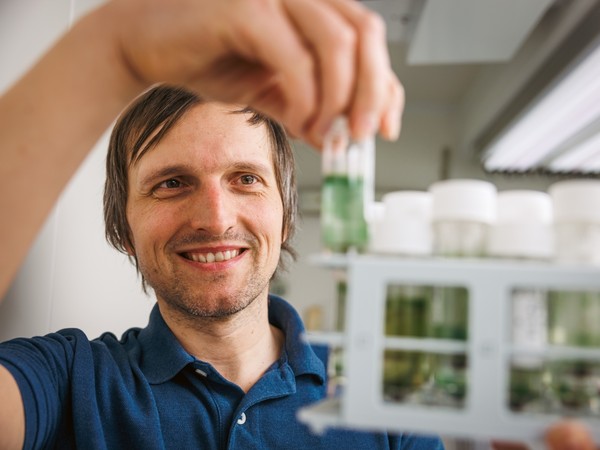An international team of scientists from the Department of Botany at the Palacký University Faculty of Science, Charles University, and Lund University in Sweden has described the early development of a new species of the microscopic alga Synura petersenii from the group of golden algae (chrysophytes), which is mainly related to its long-term adaptation to changing environmental conditions. The scientists came to this conclusion by studying more than a hundred algae samples taken from several lakes in Europe and Canada. The results of their work were published in the journal Current Biology.
“The way in which new species of organisms arise is one of the fundamental questions in biology. Relatively cheap and efficient DNA sequencing has brought about major advances. However, research in this area is still largely confined to animals and plants, despite the fact that the vast majority of species on the planet are microorganisms. Together with colleagues from Charles University (the research was led by Pavel Škaloud) and Lund University in Sweden, we have tried to fill this gap,” said Petr Dvořák from the UP Faculty of Science Department of Botany.
For their research, the scientists chose the alga Synura petersenii, which commonly lives in the plankton of lakes at our latitudes. These are colonial flagellates, whose cells are covered with siliceous scales. With the help of an electron microscope, distinctive ornaments that are species-specific can be seen on them.
“To elucidate the factors that have led to diversification within this species, we obtained more than 100 laboratory cultures from samples from multiple lakes in Europe and Canada. This is the largest dataset of its kind among algae and protozoa. Using DNA sequencing, we obtained a representation of the entire genome of each laboratory culture and subsequently reconstructed the evolutionary relationships between individual samples,” he described.
Population structure analyses have revealed that over the past 100,000+ years, Synura petersenii has evolved into three diversified populations that are on their way to become new species in the future. “Diversification began 125,000 years ago, before the last glacial period, as calculated by molecular clock dating. Significant population radiation took place in the last 14,500 years, after the last great ice age. This suggests that climate change has influenced the diversification of this alga, as it has for plants. Moreover, the diversification of Synura algae was very rapid compared to other algae, where this process takes millions of years,” noted Dvořák.
The diversification of populations of this alga has been driven by adaptation to local conditions, especially different temperatures and the amount of dissolved substances in water. Heavy rainfall has also influenced the evolution of individual populations, causing nutrients to wash up from the bottom, mixing the water and reducing transparency, which affects all planktonic organisms, which must adapt to such events. “Geographical distance at the intercontinental level also played a significant role, although these organisms were originally thought to have an almost unlimited ability to spread across the planet. Populations continue to diversify into new species, even though genetic flow continues to occur between them. This implies that ecological diversification is a stronger factor than genetic mixing of lineages,” said Dvořák.
